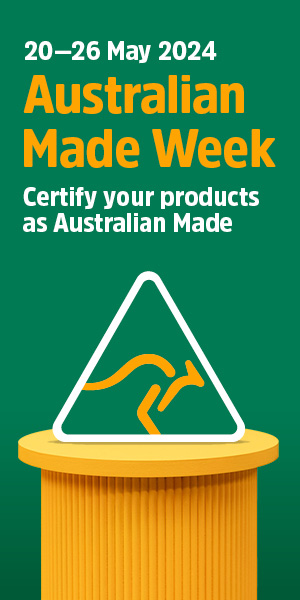Search for CRC industry partners – 7 reasons to join a CRC by Tony Peacock

Researchers led by UniSA are searching for companies interested to develop surface processing capabilities in a planned Surface Manufacturing Cooperative Research Centre (SMCRC). Here, Tony Peacock explains the seven benefits of the highly successful CRC programme.
The Cooperative Research Centres programme is one of Australia’s longest running and most successful R&D schemes. Tens of billions of dollars of new products and processes have resulted from CRC research.
The hybrid cochlear implant came of age in a CRC, as did the multi-billion dollar selling silicone hydrogel contact lenses.
The fraud detection software used by all major stock exchanges around the world came out of the Capital Market’s CRC.
The Recaldent technology in Tooth Mousse is also incorporated in Japan’s number one chewing gum.
The Surface Manufacturing CRC proposal is to leverage good Australian manufacturers into world beaters.
To learn more, the researchers have organised an online information session specially for @AuManufacturing readers on Wednesday, 22 November, 10:30 am – 11:45 am ACDT Register here.
The CRC will provide expertise, equipment, and funding to help Australian manufacturers compete on the world stage. Here are seven reasons to consider joining the CRC:
1. Innovators are winners. Companies that innovate are more successful than companies that don’t. There’s a tonne of evidence for this, with the Boston Consulting Group recently giving compelling reasons why innovation is more important than ever.
2. Collaboration is better than going it alone. CRCs foster collaboration between industry partners, universities, and government agencies. By pooling resources, knowledge, and expertise, they create a fertile ground for generating synergistic solutions to industry-specific challenges. The leadership by industry means that the research is grounded in real-world applications.
3. Access to World-Class Expertise. CRCs facilitate access to top-tier talent and experts. Universities and research institutions involved in CRCs provide a pool of intellectual capital, ensuring that industry projects benefit from cutting-edge research and a diverse range of perspectives. This wealth of expertise can be a game-changer for industries seeking innovative solutions and a competitive edge.
4. Funding and Support. The Australian government provides substantial funding and support to CRCs. This financial backing helps drive long-term research projects, making them more viable for industries. Investments into a CRC are eligible for the R&D tax incentive, meaning that your dollar can leverage a lot of value.
5. Intellectual Property Management. CRCs provide a structured framework for managing intellectual property (IP) resulting from research projects. The Surface Manufacturing CRC will have a project-by-project approach to IP, so that you have certainty from the start.
6. Skills and Workforce Development. CRCs are instrumental in nurturing the next generation of industry leaders and researchers. They provide opportunities for students and early-career researchers to gain hands-on experience and develop practical skills while working on industry-relevant projects.
7. Networking and Knowledge Sharing. CRCs serve as hubs for networking and knowledge sharing. Industry partners can collaborate with multiple organizations, expanding their professional network and gaining access to a wealth of knowledge and best practices. The connections made within CRCs can lead to new business opportunities, partnerships, and collaborations that extend beyond the research projects themselves.
Some companies join CRCs for very specific reasons – they might need access to particular people and facilities to develop a particular process.
Others join because they want to help develop the staff of the future. Remember that the government requires CRCs to be ‘industry-led’.
In thinking about joining the Surface Manufacturing CRC (or any CRC), talk to the proponents about your needs. Take the opportunity to shape the CRC to your needs in order to maximise the outcomes for your company.
Tony Peacock is a Director of Peacock Consulting. He ran the Invasive Animals CRC for ten years and the CRC Association for 10 years. He serves on the Board of the CRC for Solving Antimicrobial Resistance in Agribusiness, Food and the Environment, the Marine Bioproducts CRC as well as Ten Carbon Chemistry and the Australasian Pork Research Institute.
Picture: Tony Peacock
This series is brought to you by UniSA on behalf of the proposed Surface Manufacturing Cooperative Research Centre.

Surface Engineering and Manufacturing optimise material properties, customise products, enhancing their longevity and performance. For SMEs, it’s a gateway to innovation, reducing costs and fostering global competitiveness by delivering superior and tailored solutions. Companies can join us in our Surface Manufacturing CRC bid to shape the future of sustainable and competitive manufacturing in Australia.
To learn more, register for the online information session, Wednesday, 22 November, 10:30 am – 11:45 am ACDT Register here. …… Or email [email protected].
@aumanufacturing Sections
Analysis and Commentary Awards Defence Manufacturing News Podcast Technology Videos










